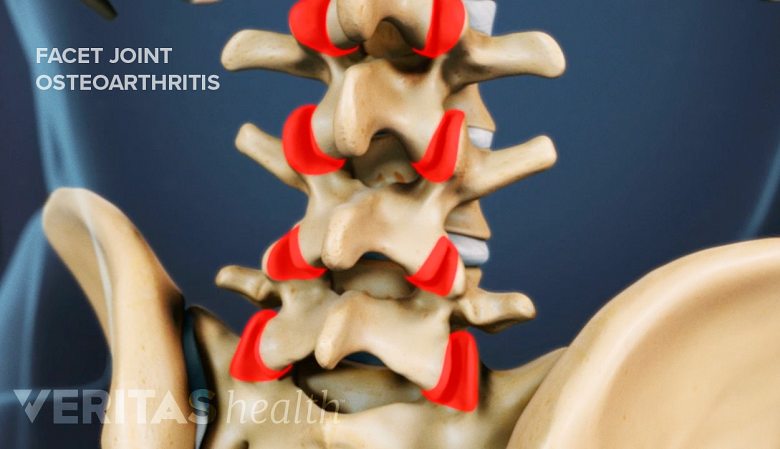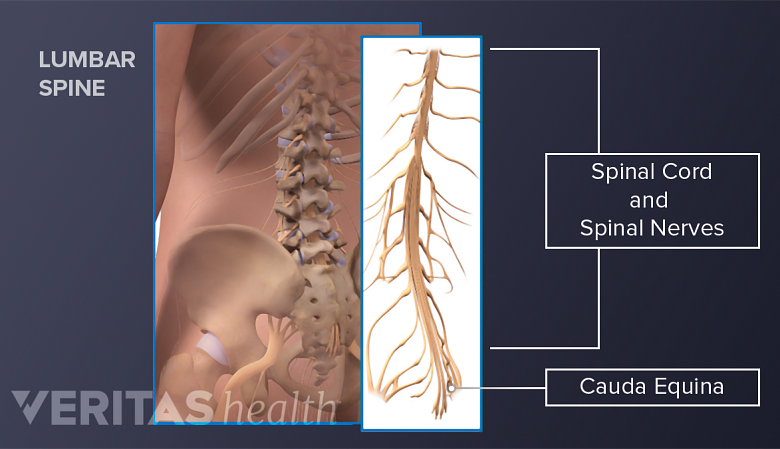Open lumbar laminectomy surgery is a common procedure used to treat the symptoms of spinal stenosis. While the complications of this surgery are rare, there may be a few risk factors that can delay or prevent the success of the surgery.
In This Article:
- Lumbar Laminectomy Surgery for Spinal Stenosis (Open Decompression)
- Considerations for Lumbar Laminectomy (Open Decompression) in Treating Spinal Stenosis
- Surgical Procedure for Lumbar Laminectomy (Open Decompression) in Spinal Stenosis
- Recovery After Lumbar Laminectomy (Open Decompression) for Spinal Stenosis
- Laminectomy and Spinal Stenosis: Risks and Complications
- Lumbar Laminectomy Surgery Video
Risk Factors for Lumbar Laminectomy Surgery
Arthritis in the facets can cause persistent low back pain even after a successful laminectomy.
Some risk factors may increase the likelihood of complications during or after lumbar laminectomy surgery. A few examples of these risks include:
- Smoking. Smoking has been discouraged both before and after any spinal surgery, including lumbar laminectomy. Smoking may
1
Schroeder GD, Kepler CK, Hilibrand AS. The effect of smoking on patients having spinal surgery. Current Orthopaedic Practice. 2016;27(2):140-145. doi:10.1097/bco.0000000000000331.
:
- Cause post-surgical infections
- Decrease the efficacy of the surgery
- Cause pseudarthrosis or non-union of the treated segments (if fusion was performed)
Watch Quitting Smoking: A Must for People with Back Pain Video
- Osteoporosis. Osteoporosis is a bone condition that causes weak and brittle bones. This condition may cause easy fractures and breakage of bony tissue and may be a risk for laminectomy patients.
- Associated conditions. Lumbar laminectomy for spinal stenosis is typically performed in the older age group, who are prone to systemic conditions. The presence of other conditions such as heart disease or diabetes may slow down the recovery process or lead to systemic complications. Pre-existing arthritis of the facets may result in continued low back pain even after a laminectomy is successfully completed.
- Mental health issues. Anxiety, depression, and other mental health issues prior to a laminectomy surgery may result in poor surgical outcomes. These conditions may cause poor patient compliance, poor adherence to post-surgical rehabilitation programs, and lower pain tolerance. The overall health and improvement of the patient may be compromised.
- Previous surgeries at the same level. In general, performing a second surgery at a spinal level that had been previously operated on has a lower rate of successful outcome.
It is advisable to discuss prior health problems, concerns, and any mental health problems with the doctor before deciding to have a laminectomy surgery. In most cases, these problems can be managed with proper medical and psychological management both before and after surgery.
Complications of Lumbar Laminectomy Surgery
Rarely, laminectomy surgery can lead to cauda equina syndrome.
Complications, although rare, may occur as a result of in-operative procedures or post-surgical problems. A few potential complications of open lumbar laminectomy are:
- Neural tissue damage. Injury to the spinal cord’s dura, cauda equina syndrome, nerve roots, and the formation of scar tissue may occur causing neural tissue damage in the lumbar spine. Depending on the severity, damage to neural tissues in the lumbar spine may result in weakness, loss of sensation, paralysis, and/or bowel/bladder incontinence.
- Instability. Instability, most likely arising due to previous surgical procedures performed on the treated levels usually results in the need for repeat surgeries in people with lesser bone density. 2 Deyo RA, Martin BI, Kreuter W, Jarvik JG, Angier H, Mirza SK. Revision surgery following operations for lumbar stenosis. J Bone Joint Surg Am. 2011;93(21):1979–1986. doi:10.2106/JBJS.J.01292.
- Adjacent level degeneration. Surgical treatments to an affected vertebral level may cause the adjacent vertebra to degenerate, eventually leading to instability.
- Continued neurogenic claudication. Leg pain while walking or bending the spine backward may sometimes continue even after a successful laminectomy surgery.
- General anesthesia complications. Rarely, heart and/or lung infection, deep vein thrombosis, or death may occur as a result of general anesthesia complications.
See Failed Back Surgery Syndrome (FBSS): What It Is and How to Avoid Pain after Surgery
As with any surgery, the risks of infection, sepsis, and severe bleeding may occur during or after open lumbar laminectomy surgery. It is advised to discuss the expected surgical outcome and the potential complications with the doctor.
- 1 Schroeder GD, Kepler CK, Hilibrand AS. The effect of smoking on patients having spinal surgery. Current Orthopaedic Practice. 2016;27(2):140-145. doi:10.1097/bco.0000000000000331.
- 2 Deyo RA, Martin BI, Kreuter W, Jarvik JG, Angier H, Mirza SK. Revision surgery following operations for lumbar stenosis. J Bone Joint Surg Am. 2011;93(21):1979–1986. doi:10.2106/JBJS.J.01292.












